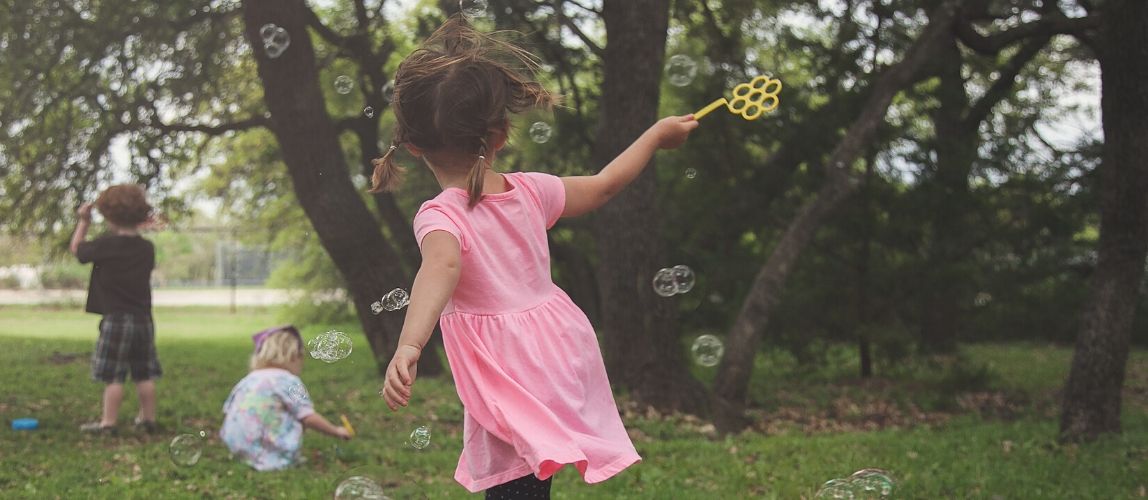Spin around a few times. Or, shake your head no (as in, “no, you can’t have another snack right now.”) In either case, you’re using your vestibular system.
Centered in the inner ear, the vestibular system, one of our senses, is triggered when we change the position of our heads. Moving the head in any direction activates the vestibular receptors and sends information which helps our brain to know where we are in space and how we are moving.
Why is the vestibular system important?
We use vestibular input and the vestibular system to support our balance and muscle tone—something we need for all movement and even to maintain our posture when we are sitting still. If you have ever had an inner ear infection, you know how important this sense is and how important balance is to all activity and our experience of the world.
In addition to balance, the vestibular system supports the spatial awareness we need to move about without stumbling, falling or bumping into other things or even other friends.
We also rely on the vestibular system to coordinate our eye movements. We can look down at a book, then look up to speak with someone and adjust our focus back and forth thanks to the vestibular system. Eye and head coordination also help us use both visual, proprioceptive, and vestibular input to navigate successfully as we move.
Perhaps surprisingly, our vestibular system also plays a central role in attention and focus. If you are like me (when I can find the time to run), you are more alert and focused after you exercise. Or, if you are like my husband, you pop into a shoulder stand when you need to regroup. Spend the entire day seated, however, and you are likely to feel quite a bit more sluggish.
These increases in focus are due, in large part, to the extra vestibular input your brain has received from the movement. Because vestibular input helps us to become and stay alert, it impacts our use of all other senses and our ability to learn overall.
“In order to create actual changes to the sensory system that results in improved attention over time, children NEED to experience what we call “rapid vestibular (balance) input” on a daily basis. In other words, they need to go upside down, spin in circles, and roll down hills.”—Angela Hanscom
Challenges for kids today
When you add up time sitting at school, meals, homework time, and screen time, kids ages 8 and up spend 85% of their waking hours seated, a Kaiser Family Foundation study found.
Unsurprisingly, we are seeing increases in ADHD, teacher reports that children struggle to attend in the classroom, and the need for fidget spinners and other devices designed to sooth and help children focus—though they are never quite able to replicate the work of the vestibular system.
What kinds of activities support the vestibular system?
Fortunately, the great outdoors are full of opportunities for kids to stimulate their vestibular system. If we remember that vestibular input comes when we move the position of our heads, we realize how easy it is when children are allowed full range of motion and the time and space to play.
A few of our favorite ways to stimulate the vestibular system:
- BABIES: Any movement of head position
- BABIES: Rolling over!
- Rolling down the hill!
- Doing somersaults
- Spinning around and around
- Holding onto ribbons, streamers, or long strips of fabric and turn with arms stretched out and spinning
- Swinging
- Seesawing
- Running around, especially when you change directions
- Collecting nature treasures on the ground (bending up and down)
Keep learning about the senses!
Indeed, our bodies and our senses are elegant, complicated things. But, just a little knowledge about how they work and how to support the natural sensory development process our kiddos were designed to experience can make a huge impact on our kids’ learning. Keep learning more with us!
- Read the introductory post in our sensory learning series, Making Sense of Sensory Development
- Read about our 9 favorite easy ways to support sensory development.
- Read more about our “sixth sense”—proprioception.
And, sign up for Tinkergarten At Home—our free, weekly set of activities designed to engage kids in purposeful play and support parents at making it happen with whatever you have on hand.
